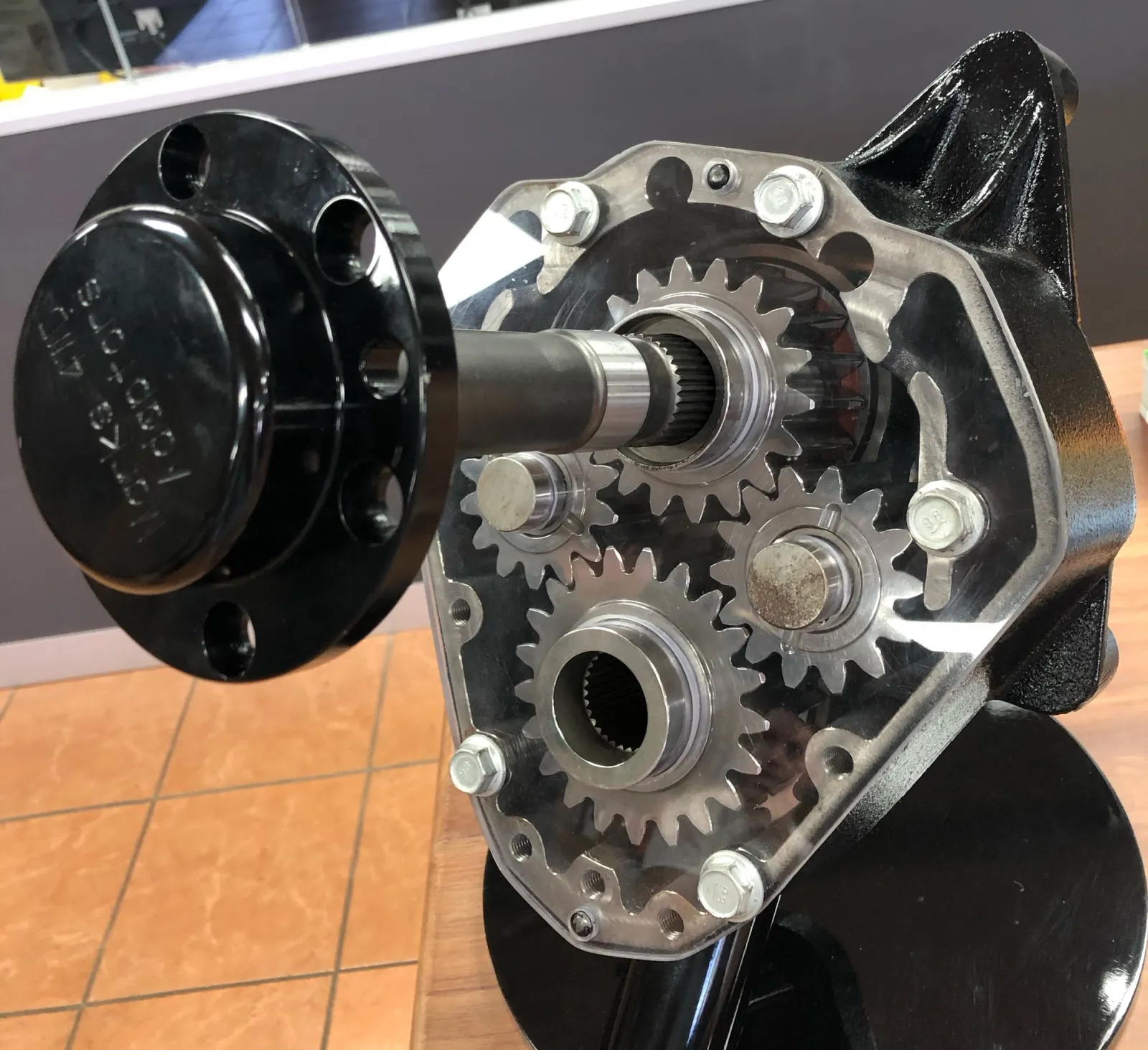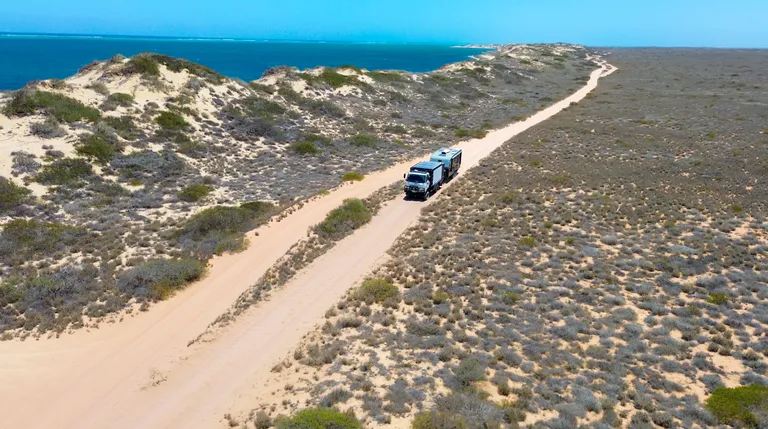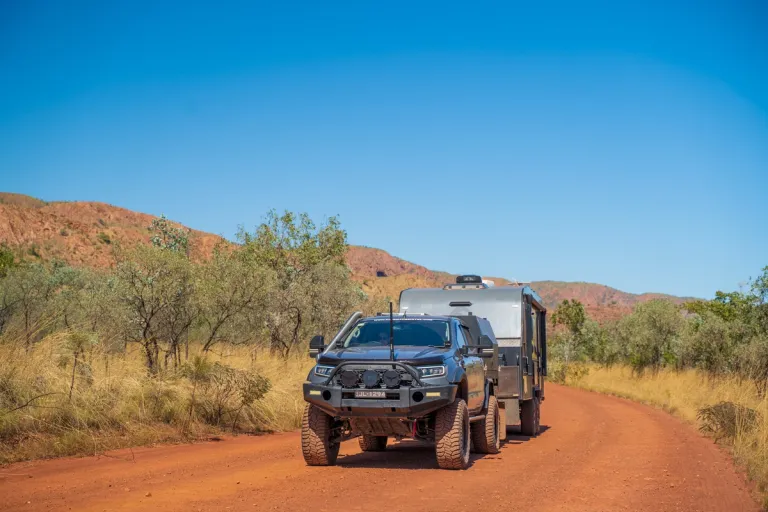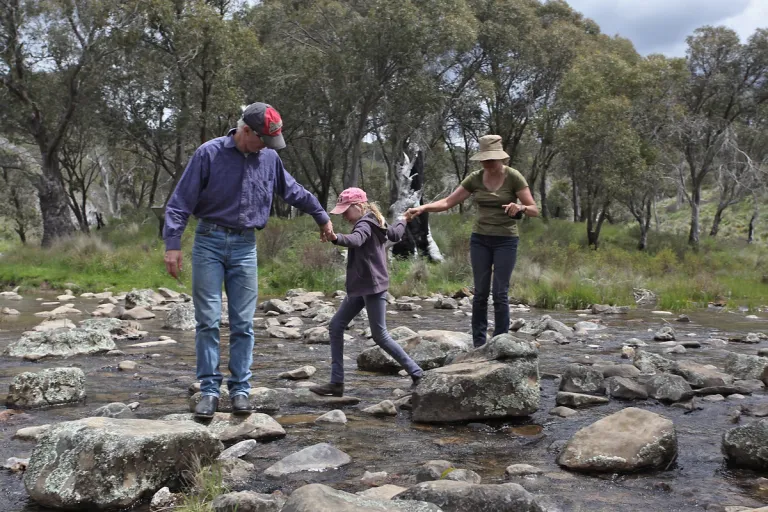Everything you ever wanted to know…
A few weeks ago, we were lucky enough to get schooled on Portal Axles while in Melbourne in the most unexpected circumstances.
We were in Melbourne for the Australian Motoring Awards (still not sure how we were invited). Anyway, it just so happened that Leigh Hardman from Mark’s 4WD was at our table. Over a few drinks, we all got to talking.
I’d not spent a lot of time researching Portal Axles, which are standard equipment in military vehicles like the Unimog. But my interest peaked when Leigh mentioned the increases in lift that you could get while maintaining the on-road handling and off-road stability you’d expect from a factory-sprung vehicle.
Now keen to learn more, we made the trip over to Marks 4WD to check it all out. We also got the chance to interview Leigh – read on for what he had to say
So What are Portal Axles?
Portal Axles are basically a modification that raises the height of the axle (and diff housing etc) above the wheel hub, increasing ground clearance. A set of gears then connect the axle shaft to the wheel hub. It has the effect of raising the axle and diff housing higher off the ground, and therefore the body of the vehicle too, giving a true increased ground clearance, and a wider wheel track.
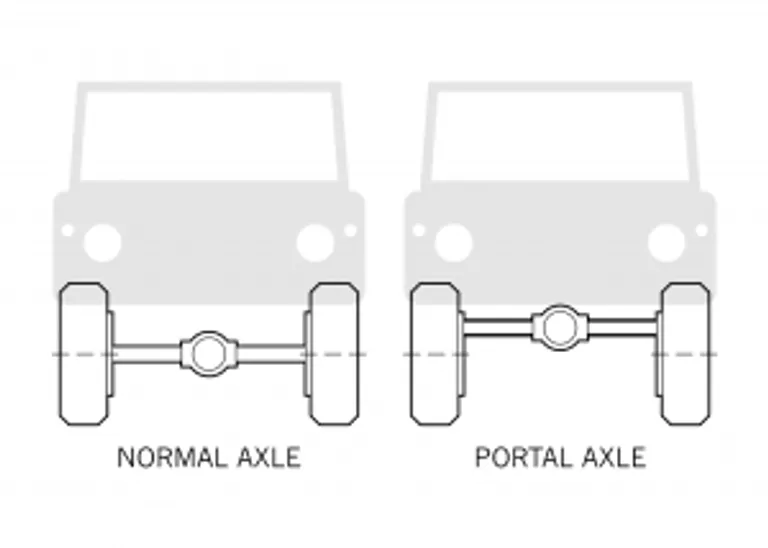
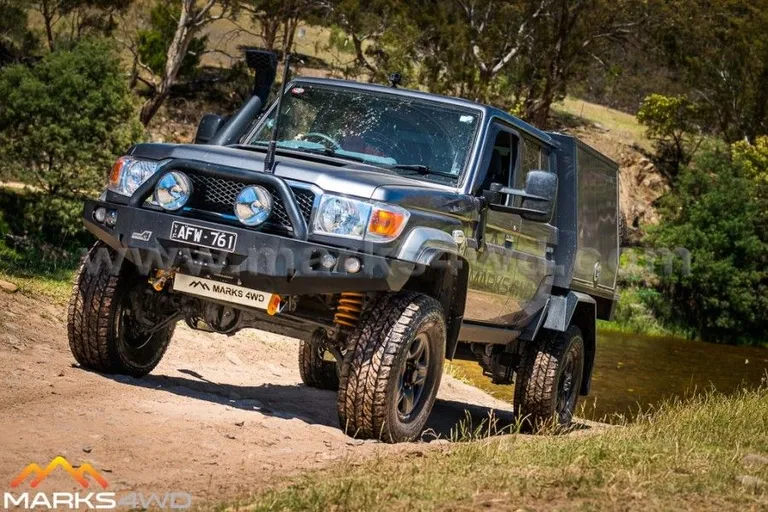
What are the key benefits?
The key benefits are as follows:
- Ability to fit 35″ tyres
- Combined 6 ” lift (with Portals and 35’s)
- Increase in ground clearance – A set of portal axles will raise the lowest point of the differential and the axle by about 4 inches. They will also lift the vehicle by a similar amount by virtue of the fact that the chassis is generally connected to the axles. Importantly, this is true ground clearance – with a traditional spring/shock lift, your diffs and axles remain at the manufacturer heights!
- Reduction in pressure on the drive train – The portal axle gears reduce the torque on the drive train reducing the load, and also offsetting the effect of increasing tyre size.
- Handling vs suspension lift – This is a big one. Portal axles can help increase the off-road capability of a vehicle because they maintain the manufacturers original suspension geometry. This means you can get significant lift while maintaining close to the handling of a stock vehicle. Even though the centre of gravity increases, the portal axles also increase wheel track slightly which helps offset the effect of the extra height. The key thing it avoids is the sway that you get and boat like handling that often comes with increasing your suspension travel with a traditional spring based suspension lift.
- Legality – the team have authority to second stage manufacture, meaning you can get these modifications before you take delivery and as far as anyone is concerned, its totally legal. If you’re retrofitting, they can easily be engineered to state regulations (even in QLD).

What are the drawbacks?
Not a self install job – Portal axles are not quite a plug and play option and take days of professional effort to get right. This includes upgrading brakes, extending brake lines, lengthening diff breathers and more. Incorrect assembly or installation can be a safety issue and cost big dollars.
The other drawback is slightly increased maintenance. You need to change the oil in each portal gearbox (and there are 4) every 10,000km. Between them, you are looking at about 3L of oil, and probably an hours worth of work.
How much do they cost?
Portal Axles aren’t cheap, and this is probably the key reason we don’t see more of them. A set of (front and rear) portal axles installed (5-8 days of work) will set you back about $28,000. This includes new brakes, brake lines, diff breathers, brand new front and rear axle assemblies, checking and straightening of axle housings, bracing of axles, painting of housings, and struts, diff centre work, fitting of swivel housings, fitting of additional kingpin bearings, new parts (CV’s, seals, bearings etc) in front axle, and mods to the handbrake. When you consider the man hours involved and the benefits it is not as expensive as you would first think, although it’s still a fair bit of cash to splash. The other consideration is that you’ll probably need new wheels and tyres.
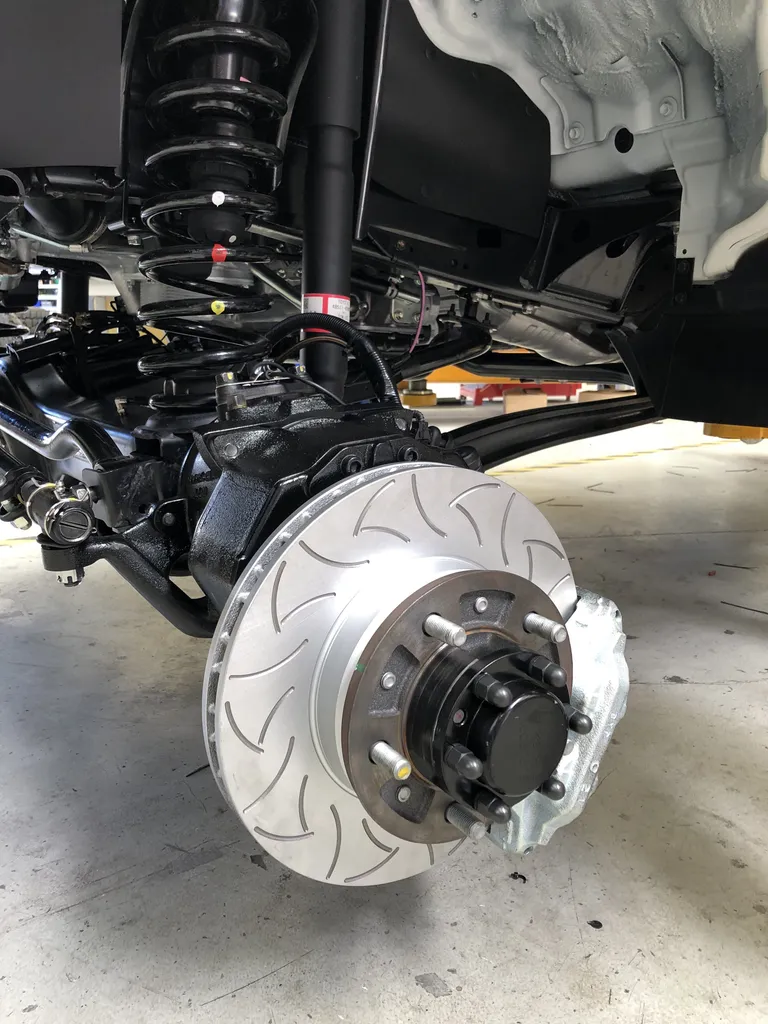
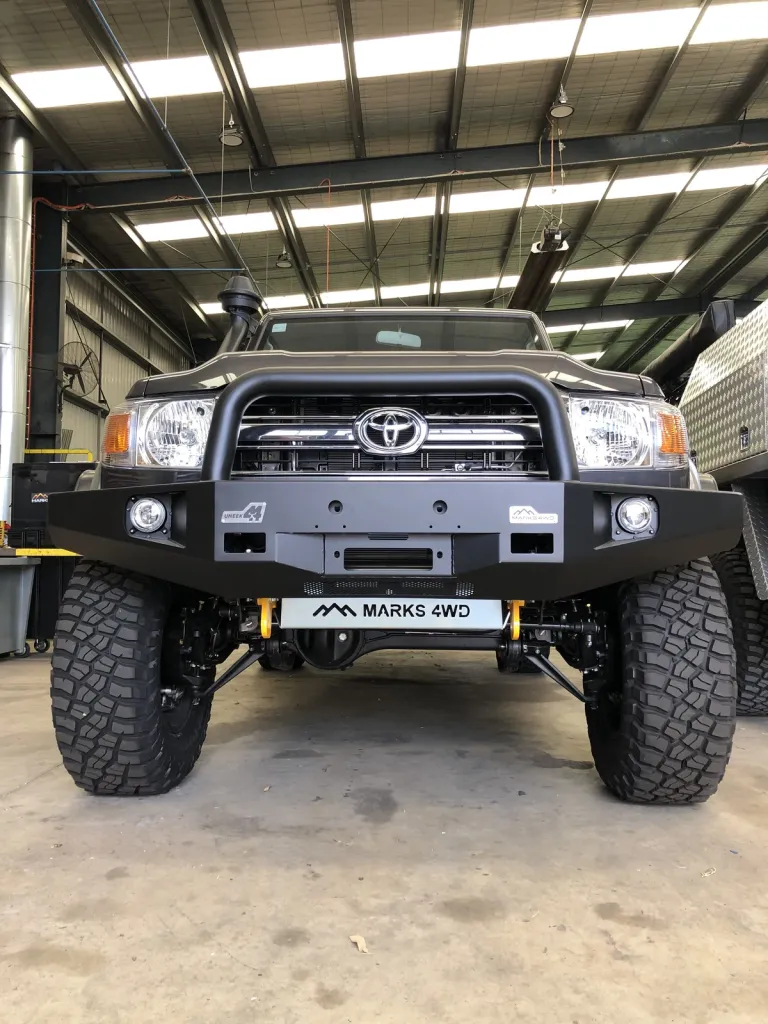
Q&A with Leigh Hardman from Mark’s 4WD
Fascinated with what I’d learned about Portal Axles, I took the opportunity to pick the brain of Leigh Hardman, General manager of Marks 4WD.
Q: How many components make up a set of Portal Axles
LH: (Laughing) – I couldn’t tell you for sure, but it’s definitely in the hundreds.
Q: And you manufacture all those parts in-house?
LH: Yes, almost all of them. We buy in things like nuts and bolts, seals, and bearings, but everything else is made here in our factory in Melbourne.
Q: What are the most common questions you get in relation to Portal Axles?
LH:
- Are they Legal? We are licensed to Second Stage Manufacture vehicles that are brand new, so if they come to us new and unregistered, we can install Portal axles and certify the vehicle to the new specifications prior to initial registration. This means that the vehicle is certified nationally and can be registered in any state without any further engineering certification. Alternatively, we can fit Portal Axles to a vehicle that has been registered, and then have it certified by an engineer so that the state transport authority will allow it to be registered with the modifications. The catch here is that if you sell the vehicle to someone interstate, or even move interstate, the engineering certificate is only valid for the state it was granted meaning you could be up for another charge to have it inspected and approved again.
- Can you fit 35’s to a car with Portal Axles legally? Increasing tyre size generally affects the gearing because the bigger tyres make the vehicle travel further per revolution of the tyre, but also put more pressure on the gearbox which was designed for a smaller diameter tyre. This can also mean that low range isn’t so low anymore. The good news is that the addition of Portal Axles reduces the gear ratio, offsetting the increase in tyre size which can save you from having to change the gearing of the vehicle.
- What about 37’s? Adding a 37 Inch tyre to a vehicle with portal axles will mean that the headlight height exceeds legal limits. The additional diameter of the tyre will also potentially put forces through the driveline that our Portal Axles were not designed for, voiding the warranty.
- Can you also do a suspension lift? Yes, within legal limits. I.E – depending on what tyre you choose to run, you can also add a suspension lift too and still be within the legal limits. If you happen to add Portals before you first register the car though, the heights with the Portal Axles and first fitted tyres becomes the standard height of the car, giving you a bit more freedom with your suspension lift.
- What does the addition of Portal Axles do to my Speedo etc? Nothing much. We test the Speedo to ensure accuracy as part of the install process. We also take care of ABS and ESC to ensure that they still function as normal.
Q: What kind of warranty do you offer?
LH: For brand new vehicles, we offer a 3-year warranty on our products. For others, please speak to us because a few factors apply.
Q: What vehicles are Portal Axles available on?
LH: At the moment, we can install Portal Axles on Landcruiser 70 series (2007 onwards), as well as GU Nissan Patrols. We are working on developing kits for models with Independent Front Suspension, such as the Ford Ranger.
Q: How long does it take to install a set of Portal Axles?
LH: It’s actually a fairly lengthy process and takes 5-8 days. We need to build the portal Axles, install the new hubs, replace rotors and pads, replace the brake lines, install breathers, install an air compressor for the air operated hubs, install a transmission handbrake, install the Portal Axles, then test.
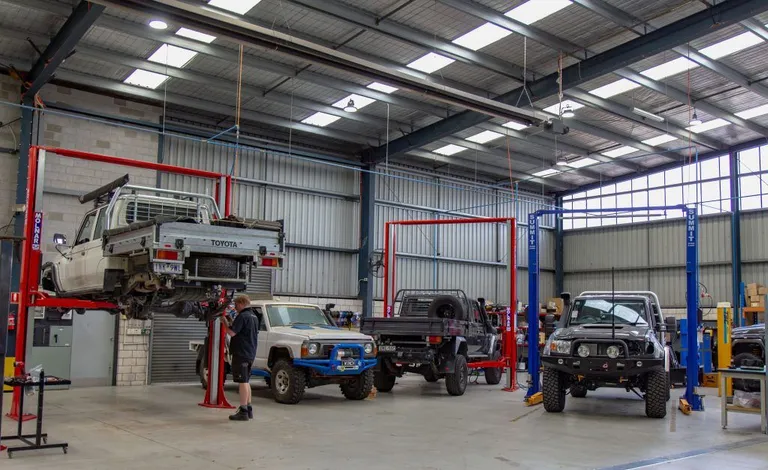
So what? Kalen’s comments on road testing two vehicles with Portal’s fitted
I was the lucky one who go to do some quick on-road test drives whilst visiting the Marks 4WD facility. The first set of keys Leigh threw me was for a Ranger development mule. Immediately you feel the difference in height, but what was amazing was how tactile and responsive the steering still felt – under brakes there was none of the nose-diving you get from a sprung lift and its attitude through corners was impeccable – the extra track I think even improved turn-in feel.
But the “piece de resistance” was the company promotional 79. I think I’ve said before that a manual 70 series of any description is more fun to drive than any vehicle of this nature should be. Leigh’s 79 was equipped with the portals, along with a GM 6 speed gearbox and also aftermarket suspension (amongst a whole lot more!). With a nice chunk over 200 kilowatts at hand it was a truly an amazing package. The 79 had mountains of torque that seemed to forever be at hand with the ratios of the gearbox, but again, the behaviour under brakes and through long and short corners, even a slight dogleg was amazing.
‘I would LOVE the opportunity to try these things off-road! No more hung up diffs or bellypans and I reckon, a significant increase in confidence gained from the stability of the setup’ – Kalen
Want to know more?
If you’d like to know more about Portal Axles, Marks 4WD Adaptors is a great pace to start. You can check them out at www.marks4wd.com
Have you got a set of Portal Axles? We’d love to hear your thoughts on them – please comment below!
Aiden


